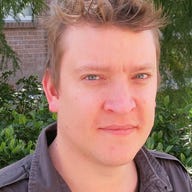Health checks via smartphones, tablets on the way

A new cloud-based health care monitoring system in development by Charles Sturt University (CSU) could help deliver improved health services to regional and rural Australia, while helping reduce the ballooning cost of the country's health budget.
The system, being researched by staff at the university's School of Computing and Mathematics, combines wearable sensors, wireless sensor networks, body area wireless sensor networks (BAWSN), smart devices, cloud computing, and security technology to continuously monitor and manage the vital statistics of patients, such as heart rate and blood pressure levels.
According to the head of the system's research team, Dr Tanveer Zia, the placement of collected data on the cloud will enable medical practitioners to access patient health information anywhere, regardless of their proximity to the patients.
"The system will also generate alerts through the smartphones, which will be sent to the medical practitioners, ambulance service, and a nominated caregiver when data goes beyond a threshold; for example, an alert to the ambulance service may potentially save a life of a patient who has fallen in an isolated place," he told ZDNet.
According to Dr Zia, the new system is potentially superior to current medical monitoring systems in that the use of tiny and unobtrusive sensors will encourage elderly patients to actually use it. The system will also not require use in controlled and supervised settings, such as a nursing home or medical facility, and its improved connectivity will allow for real-time alerts on a patient's status.
"An ideal healthcare monitoring system should have the capability to collect and interpret data and trigger specific actions in real-time," he said. "At the same time, it should ensure the privacy and security of data."
Dr Zia said that to the best of the research team's knowledge, the successful collection of data through a BAWSN and wirelessly placed on a cloud-based system to allow physicians remote access has yet to be achieved.
"This breakthrough study will contribute significantly to further advancing research in wireless sensor networks, wireless body area networks, cloud computing, and security in wireless communication from healthcare perspectives," he said.
Looking ahead, Dr Zia said the sharp increase in the world's ageing population — from 375 million aged 65 or older in 1990 to 761 million aged 65 or older by 2025 — means that the system has global application.
"Obtaining the economic and human resources required to cater for the needs of this substantially increased ageing population will be a huge challenge," he said, "For elderly who live in their homes or in old-aged homes, there is an increased risk of falls and strokes, which could prove life threatening. The system will help reduce these incidents at very low cost."
Dr Zia said that the research team had begun seeking additional resources to realise this benefit, most recently submitting a funding proposal to National Institutes of Health in the US.
"Depending on the funding outcomes we aim to achieve our system goals within three years," he said.